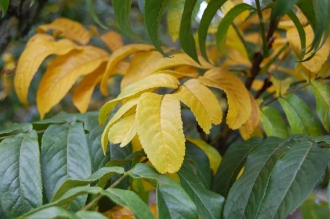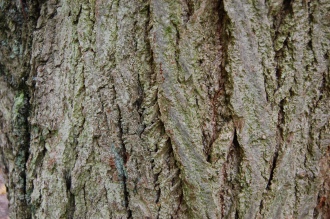Position: Full sun to light shade
Soil: Moist, well drained
Flowering period: Spring
Eventual Height: 35m
Eventual Spread: 25m
Hardiness: 5a, 5b, 6a, 6b, 7a, 7b, 8a, 8b, 9a
Family: Juglandaceae
Pterocarya fraxinifolia is a large, vigorous, deciduous tree with a rounded habit. Its bright green leaves are pinnate, up to 60cm long and are comprised of up to 27 leaflets. Its leaves turn yellow in autumn before they fall. Its green monoecious flowers are catkins the male being up to 12cm long and the female up to 50cm. In summer the females catkins will produce green winged fruit, these turn brown with age.
Pterocarya fraxinifolia, commonly known as the Caucasian Wingnut or Caucasian Walnut, is native to the mountains of the Caucasian region of south west Asia. It was introduced into the UK in 1782.
The etymological root of the binomial name Pterocarya is derived from ancient Greek meaning ‘winged-nut’. Fraxinifolia is derived from the Latin Fraxinus, another genus and folium meaning ‘leaf’.
The Landscape architect may find Pterocarya fraxinifolia useful as a specimen tree in a parkland setting, with interesting pendulous fruiting catkins on display in summer. It is also useful to stabilise river banks. It should not be planted close to drainage runs or foundations to buildings. This tree may sucker.
Ecologically, Pterocarya fraxinifolia is of little interest to UK wildlife.
Pterocarya fraxinifolia prefers moist, deep, well-drained soils. It tolerates most pH of soil.
Pterocarya fraxinifolia requires little maintenance. Pruning should be carried out during the summer months to prevent bleeding.







